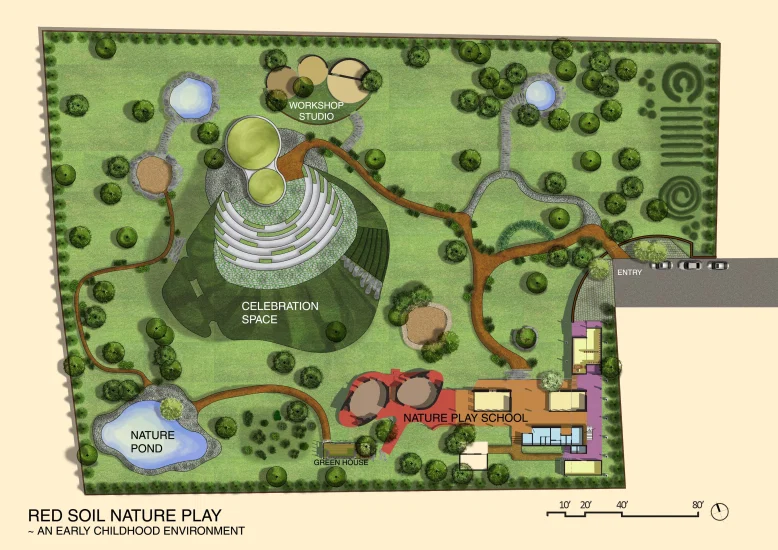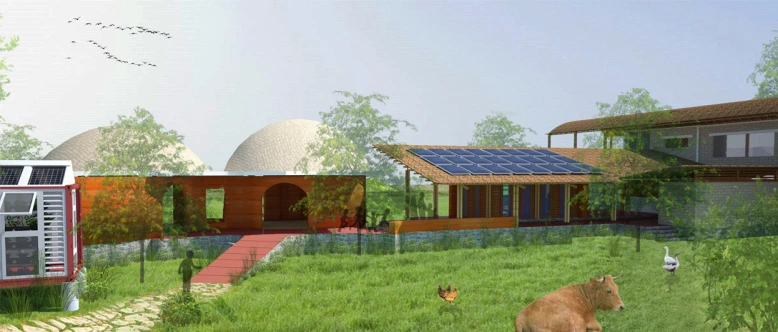
RED SOIL NATURE PLAY is spread across approx. 2 acres of land. We intend to develop it as a self sustainable environment, where water, energy and waste management follow environment friendly practices. Red Soil’s unique feature is the interwoven environment where Nature Play areas camouflage with Permaculture.
The sense of the place is to inspire and ignite young minds to explore and experience nature in a peaceful unhurried manner. The children’s play areas are set in a way where nature itself moulds them seasonally. The play landscape with diverse natural elements would provide a variety of opportunities for children’s play. At Red Soil, we have planted 100+ indigenous trees of South India. We are in the process of growing a wide assortment of vegetables, grains, herbs and plants. The herb garden would also be a special forte with over 40 herbs. Farm animals like hens, ducks and goats would also find a comfortable abode in the habitat.

A Celebration Space is set amidst trees and plants, where events take place on the lap of nature. The built structures at Red Soil would be made of natural materials like mud and bamboo. The indoor facility which we would use in times of harsh weather conditions would be a comfortable and cozy place bringing warmth along with the cheerfulness of the outdoors. The design would integrate safety as a prime factor throughout the environment to the most viable extent.
At present, the development of Red Soil is under progress. Red Soil Nature Play is the first Nature Play Environment in Karnataka, situated in our own ‘Namma’ Bengaluru. We are determined to create this place as a unique role model of a self sustaining ecosystem.
“… nature must be seen as an essential component of the experiential world of childhood, designed into every childhood habitat, providing daily immersion in nature, putting children in close touch with the biosphere. In the urban world we live in, implementation of this right cannot be left to chance. It is a design imperative.” (Moore and Cosco, 2000)